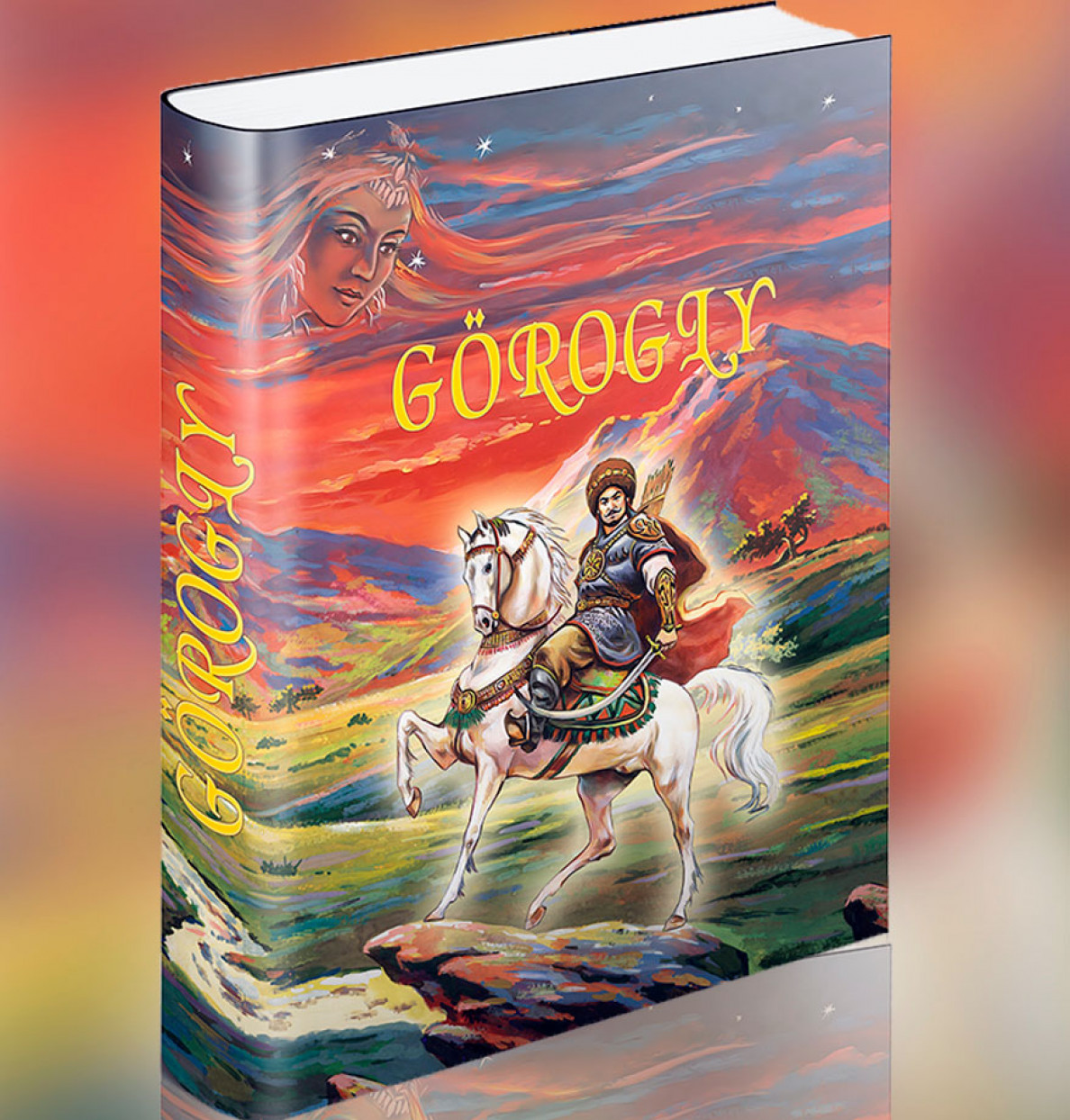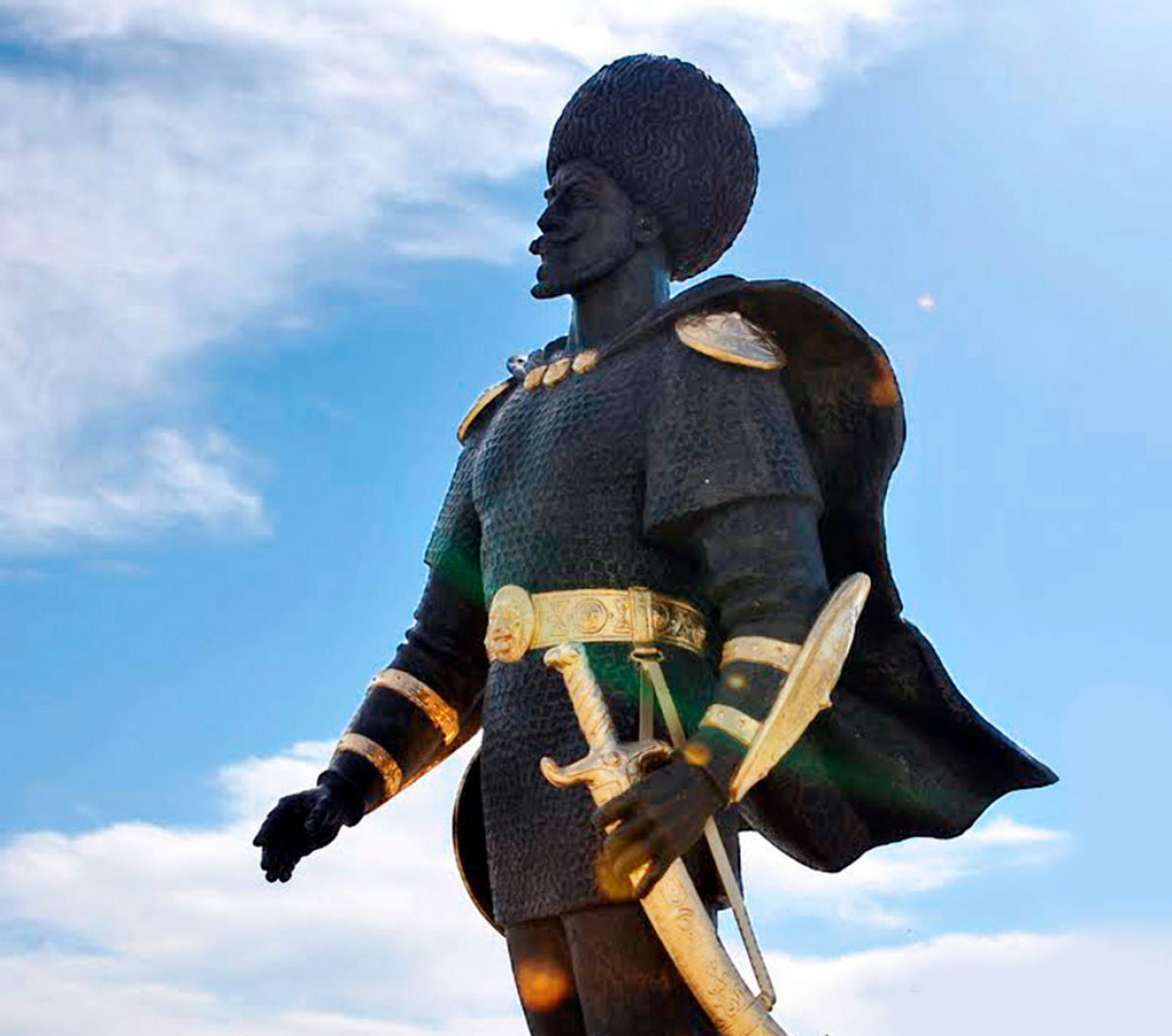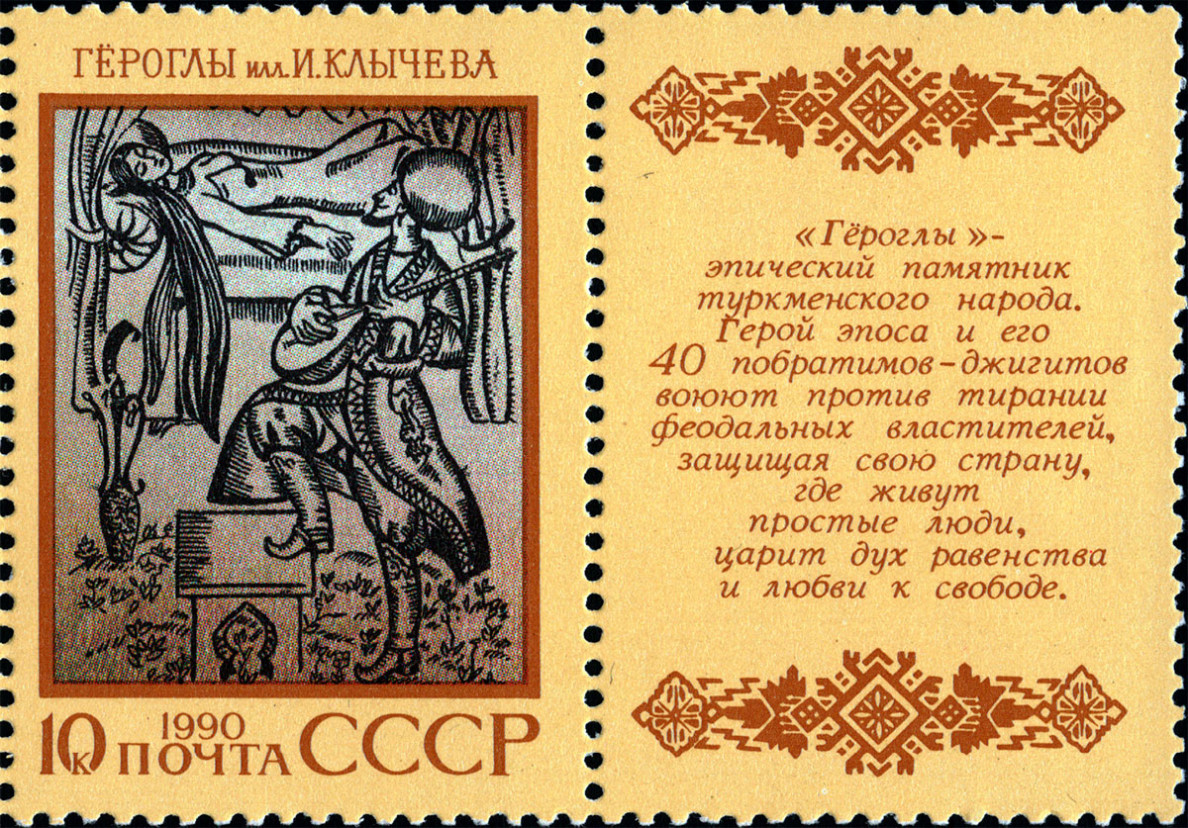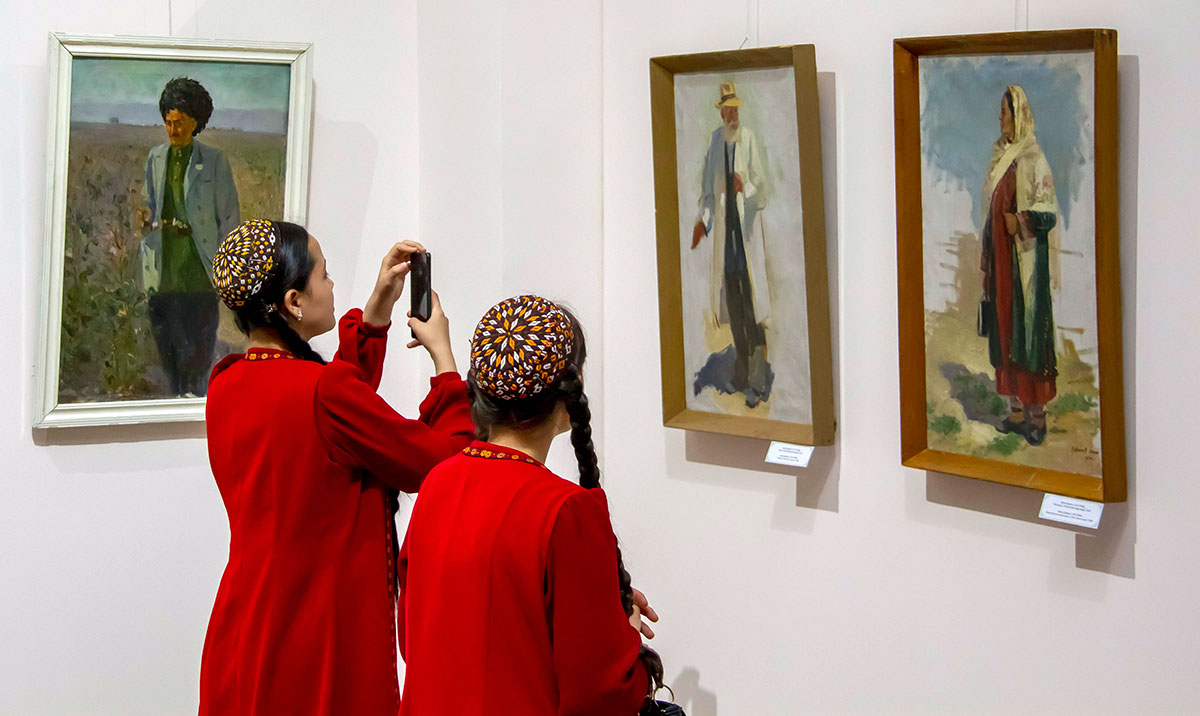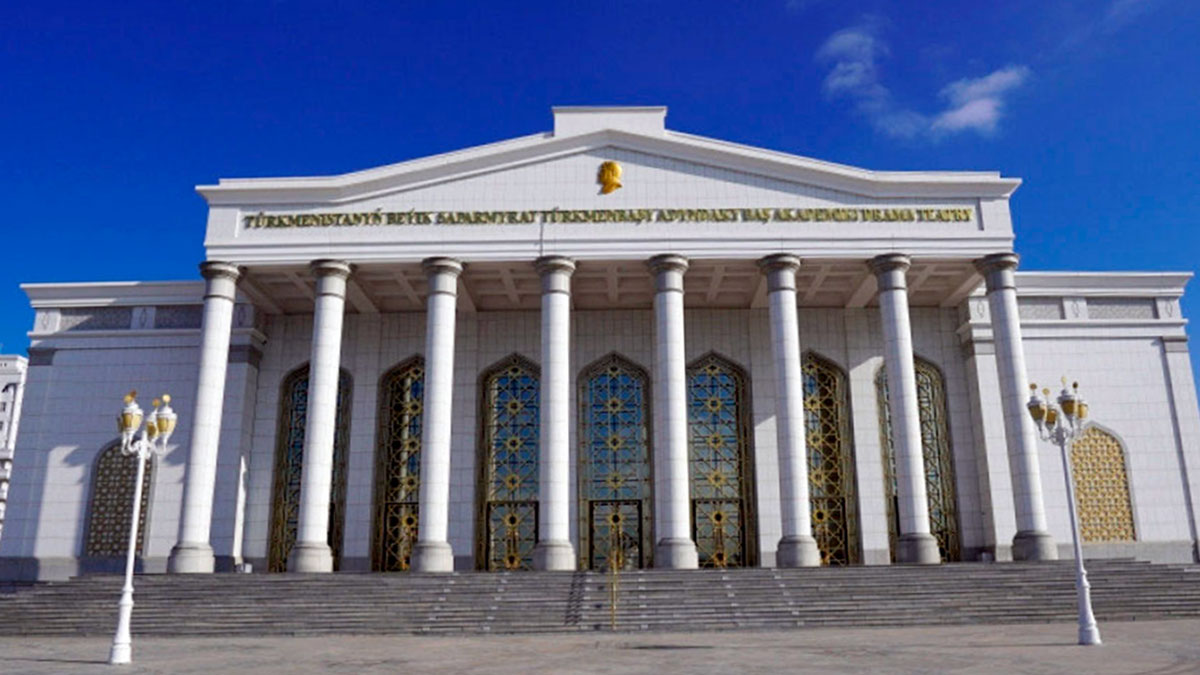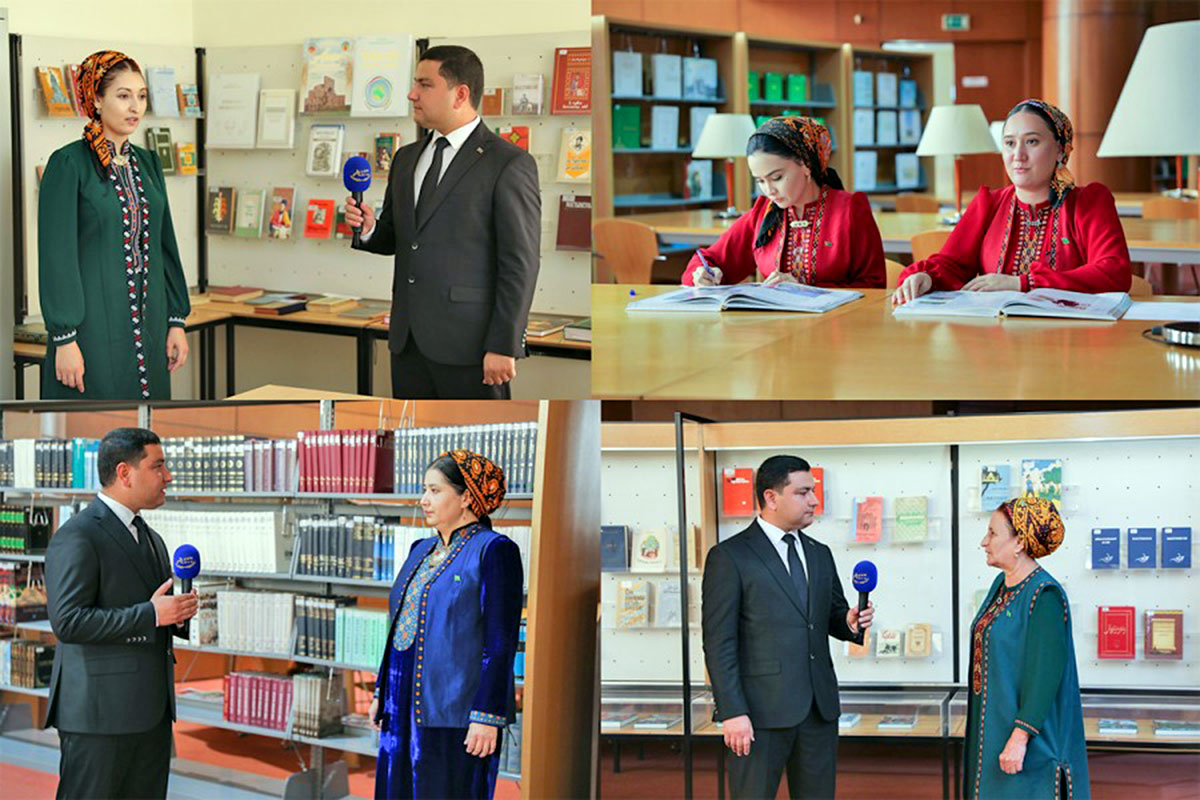In 2003, the UNESCO General Conference has adopted the Convention of protection of intangible cultural heritage. Oral traditions, national music and dances, rituals and festivals as well as unique national craft received this name.
The tie with nature, history, cultural variety, passing from generation to generation are characteristic features of such objects. The heritage itself is not limited by material values only but also has a name of ‘live’ heritage. Preservation of endangered languages is also implemented under this program.
The sessions of the Committee, which review nominations prepared by representatives of different states and determine the objects that would be added to the representative list of intangible cultural human heritage, are held twice a year.
The List has elements related to Turkmenistan. First, Turkmen heroic epic of Gyorogly has been included to the list in 2015.
Warrior, singer and musician Gyorogly is the main character of the epic, which is very popular in Central Asia, Transcaucasia and Turkey. The legends about Gyorogly have been verbally passed throughout the centuries and performed accompanied by the music not only by Turkmens but also by Turkish, Azeri, Armenian, Kurdish, Tajik, Uzbek, Karakalpak and Kazakh people.
According to big researches of the epic and its translator into Russian language, Professor Baymuhammed Karriyev, “being a creation of many nations and generations, the versions of the epic are distinguished with story lines, creative and visual events as well as originality of selection and narrating of the stories”.
Armed struggle of Gyorogly and his forty soldiers against the oppressors for will and independence of native land is the main subjects of the epic. As per Turkmen version, Gyorogly’s mother dies while being pregnant and he is born in the grave (hence, the translation of his name – son of a grave, comes). Grandfather, in other versions father of Gyorogly, was blinded by khan (other interpretation of his name – son of a blind) and the hero is growing up dreaming of revenge.
He has an unusual power, he is patronized by Prophet Hyzyr and saints. The young become the owner of magic weapon – patronizing ghosts gifted him a sword made of sky metal. He also receives a winged horse Gyrat with wonderful features as a gift; and the hero himself has got a unique Isfahan bow.
Having grown up, Gyorogly kills the assailant khan and builds an impregnable fortress Chandybil in the mountains where he lives with his warriors not surrendering to the rulers. The epic of Gyrogly includes a story how the enemies have stolen Gyrat the horse and how the hero has liberated it.
In Turkmen version of the epic, Gyrogly marries a wise peri Agayunus, which advices he always follows. Not able to have children, he adopts young boy Ovez, who becomes one of the best in the guard of Gyorogly. Uzbek and Turkmen versions of the epic also mention the second son of the hero, Hasan.
B. Karriyev highlights that idealized Gyrogly keeps the features of ordinary person. He and his mates, who are used to struggle, like to have fun, to enjoy good food, songs and music. The same like all mortals, Gyorogly makes mistakes, sometimes shows temper, sometimes he is infallible and over confident.
Authors of the epic condemns these features of the hero and, probably that is why there are episodes when Gyorogly regrets his actions, which demonstrate his desire to correct the consequences of some of his deeds.
There is not much information about the death of Gyorogly. In one version of the epic, he was an old man and went for pilgrimage to Mecca and died on his way in combat against enemies; in other version, Gyorogly did not die and retired to the mountain cave at the age of 120 years old.
Professor Karriyev was confident that the epic reflects the events of not only one century; some elements of the epic were originated before the XVI century. Taking into consideration that Turkmen story tellers permanently added the story lines of the songs, it would not be a mistake to say that echoes of turbulent events of XVIII century, which was marked by cruel fight of Turkmens against foreign conquerors, sound in the epic.
The epic does not only narrate about heroic feats of warriors who fought for honor and freedom of native land, it is also a moral code of its time. Moral lessons are given to the listeners through the songs of bakhshys. Advices, appealing songs, monologue songs and dialogs of the epic have educated many generations of Turkmen people in the spirit of love of the Motherland, taught the behavior in life, loyalty to friends and hate of enemy.
The style of the Epic of Gyorogly is simple and expressive, the language is rich and is close to people’s language. It contains many sayings and proverbs, catch phrases, which enhance the revealing of all the depth of heroes’ anguish and meaning of their actions. The language of the epic is close to the best works of Magtumguly, Kemine, Myataji and other classics of Turkmen poetry. By genre, this is a heroic ‘destan’, ‘hekaya’, ‘kyssa’, in other words, combination of prosaic and verses, in the format of people’s poetry with clear rhythmical structure and rhyme.
One of the main streets of Ashgabat and district in Dashoguz Region are named after Gyorogly. His image is embodied in works of modern painting and graphics, in sculpture, it is place on 20 manat banknote and the epic itself was published in big quantity.
To be continued…
Roman TEPLYAKOV




